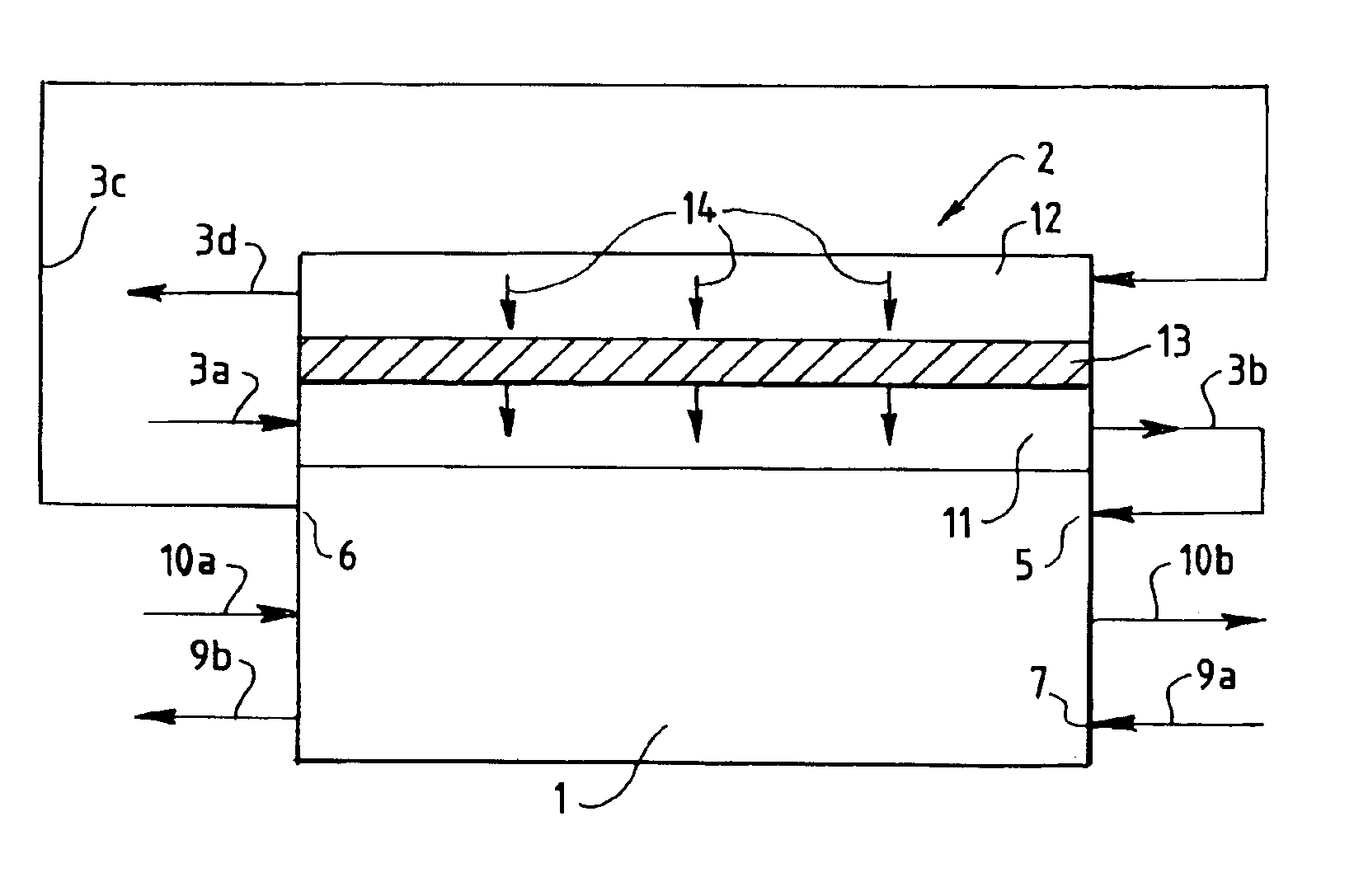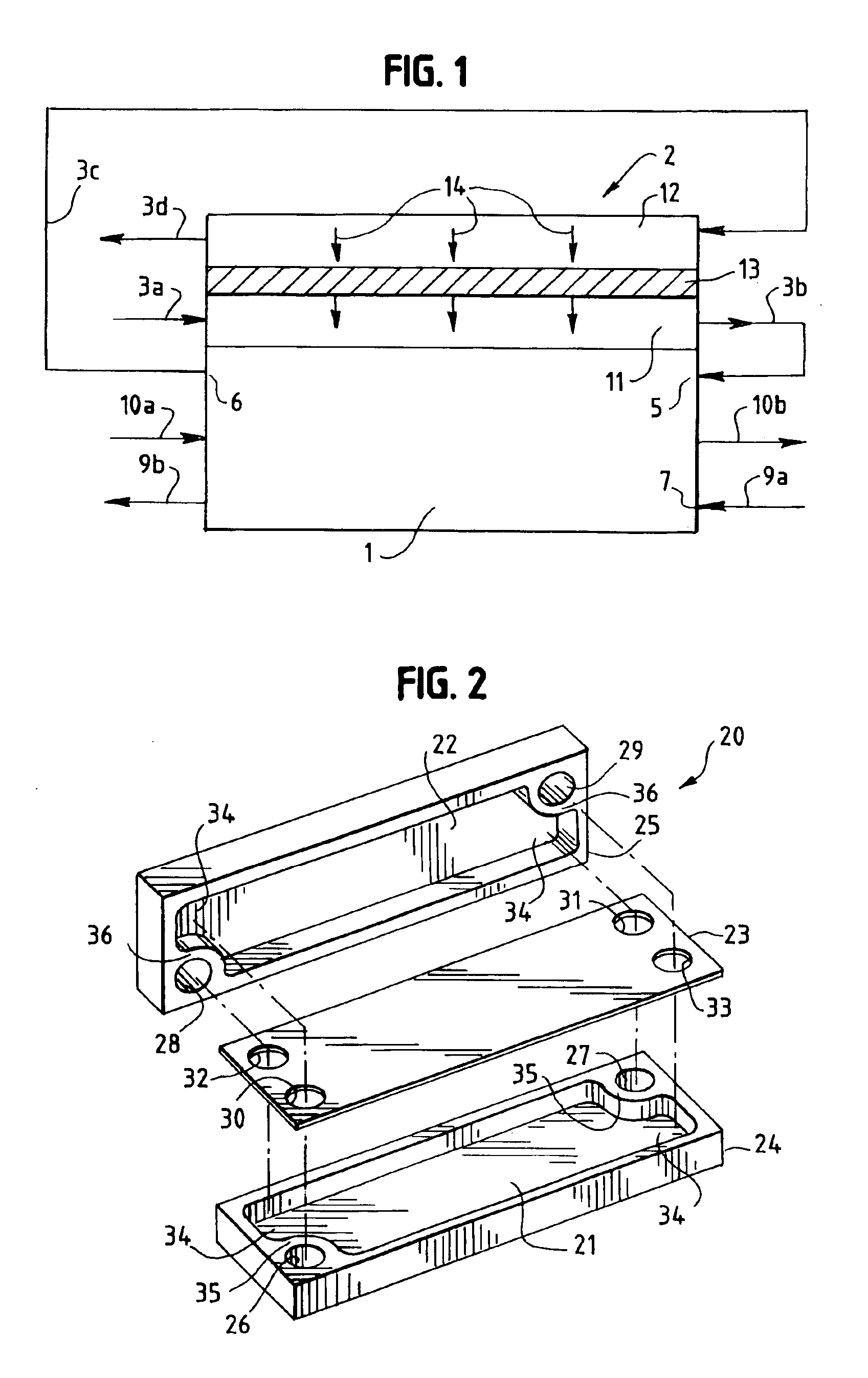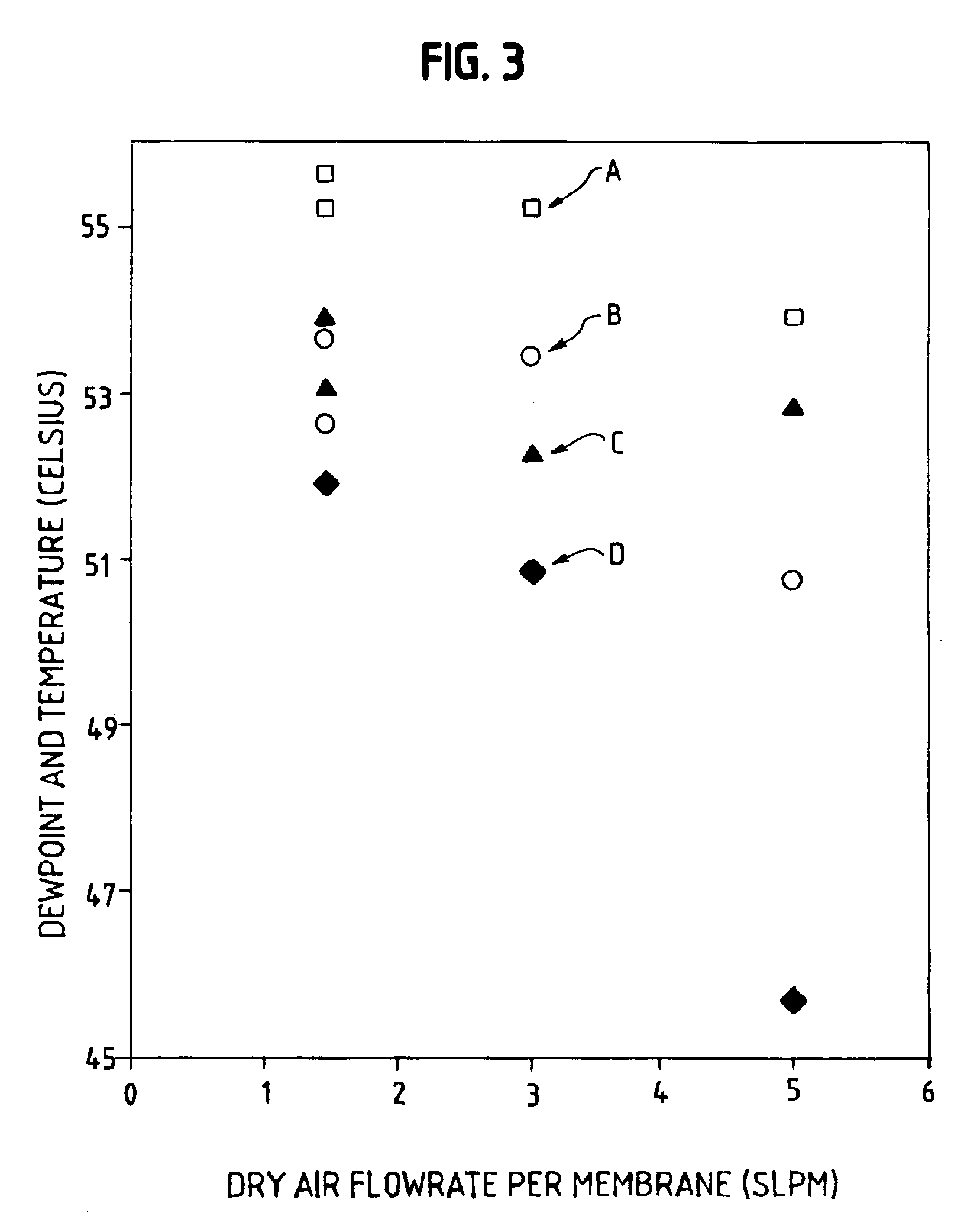Membrane exchange humidifier for a fuel cell
a technology of membrane exchange and humidifier, which is applied in the direction of fuel cell auxiliaries, solid electrolyte fuel cells, fuel cells, etc., can solve the problems of interference with the desired effect, and achieve the effect of simplifying the construction of humidifiers
- Summary
- Abstract
- Description
- Claims
- Application Information
AI Technical Summary
Benefits of technology
Problems solved by technology
Method used
Image
Examples
examples
The performance of a variety of membrane materials was evaluated in a membrane exchange humidifier operating under conditions expected in a typical solid polymer fuel cell system. The humidifier employed a single membrane, countercurrent flow, plate-and-frame type of construction such as shown in FIG. 1. The interior length, width, and depth of the chambers in the humidifier were about 22 cm, 3.8 cm, and 0.1 cm respectively. The active area of the membrane materials tested was about 50 cm2.
The simulated dry fuel cell oxidant supply stream supplied to the humidifier was ambient air (approximately 20° C. and with a 10° C. dewpoint) at a flow rate of 6 L / minute and 1 psig (about 6.9 kPa gauge). The simulated wet fuel cell oxidant exhaust stream supplied to the humidifier was heated and humidified air from a contact humidifier (at 65° C. and with a 69° C. dewpoint, implying water was present in both the liquid and gas phase) at a flow rate of 5.4 L / minute and about ambient pressure. (Th...
PUM
 Login to View More
Login to View More Abstract
Description
Claims
Application Information
 Login to View More
Login to View More - R&D
- Intellectual Property
- Life Sciences
- Materials
- Tech Scout
- Unparalleled Data Quality
- Higher Quality Content
- 60% Fewer Hallucinations
Browse by: Latest US Patents, China's latest patents, Technical Efficacy Thesaurus, Application Domain, Technology Topic, Popular Technical Reports.
© 2025 PatSnap. All rights reserved.Legal|Privacy policy|Modern Slavery Act Transparency Statement|Sitemap|About US| Contact US: help@patsnap.com



